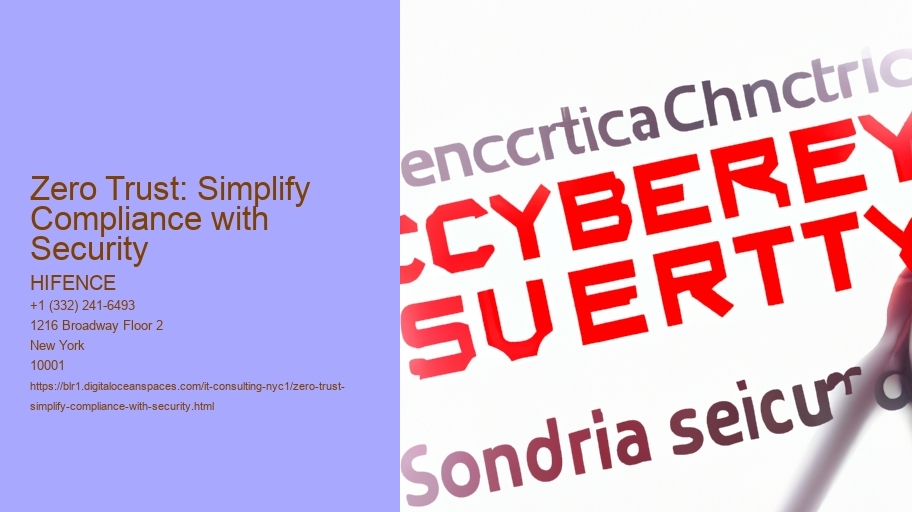Zero Trust: Simplify Compliance with Security
The digital landscape is a complex and ever-changing battlefield (really, it is). Organizations are constantly under siege from cyber threats, and traditional security models, which often rely on a "trust but verify" approach within the network perimeter, are proving increasingly inadequate. This is where Zero Trust comes in, a security philosophy that, surprisingly, can actually simplify compliance.

Think of it this way: traditional security is like having a castle with thick walls. Once someone gets inside, theyre generally considered safe. Zero Trust, on the other hand, treats everyone – internal and external users alike – as potentially hostile.
Zero Trust: Simplify Compliance with Security - managed service new york
- managed service new york
- managed services new york city
- managed it security services provider
- managed service new york
- managed services new york city
- managed it security services provider
- managed service new york
- managed services new york city
- managed it security services provider
- managed service new york
Zero Trust: Simplify Compliance with Security - check
- managed it security services provider
- managed services new york city
- managed it security services provider
- managed services new york city
- managed it security services provider
- managed services new york city
- managed it security services provider
- managed services new york city
- managed it security services provider
- managed services new york city
- managed it security services provider

How does this simplify compliance? Well, many regulatory frameworks (like GDPR, HIPAA, and PCI DSS) demand stringent access controls, data protection measures, and continuous monitoring. Zero Trust inherently addresses these requirements. By enforcing granular access controls based on identity, device posture, and context, organizations can demonstrate that they are actively limiting access to sensitive data. (This is a huge win for auditors.)

Furthermore, the principle of least privilege, a cornerstone of Zero Trust, directly aligns with compliance mandates that require limiting data access to only those who absolutely need it. By continuously verifying access requests and minimizing the "blast radius" of a potential breach, Zero Trust helps companies demonstrate theyre taking reasonable steps to protect sensitive information. (Its about showing youre trying, and trying hard.)

The built-in monitoring and logging capabilities of Zero Trust architectures are also crucial for compliance. These capabilities provide a detailed audit trail of who accessed what, when, and how.
Zero Trust: Simplify Compliance with Security - check
- managed it security services provider
- managed it security services provider
- managed it security services provider
- managed it security services provider
- managed it security services provider
- managed it security services provider
- managed it security services provider
While implementing Zero Trust might seem daunting at first, the long-term benefits for compliance are significant. By proactively addressing security risks and demonstrating a commitment to data protection, organizations can not only reduce their risk of breaches but also streamline the compliance process. Instead of scrambling to meet regulatory requirements after the fact, Zero Trust allows companies to build security into their infrastructure from the ground up.
Zero Trust: Simplify Compliance with Security - managed service new york
In essence, Zero Trust isnt just about better security; its about building a more secure and compliant organization.
Zero Trust: Simplify Compliance with Security - managed it security services provider
- managed service new york
- managed services new york city
- managed it security services provider
- managed service new york
- managed services new york city
- managed it security services provider
- managed service new york
- managed services new york city
Zero Trust: Simplify Compliance with Security - check
- managed service new york
